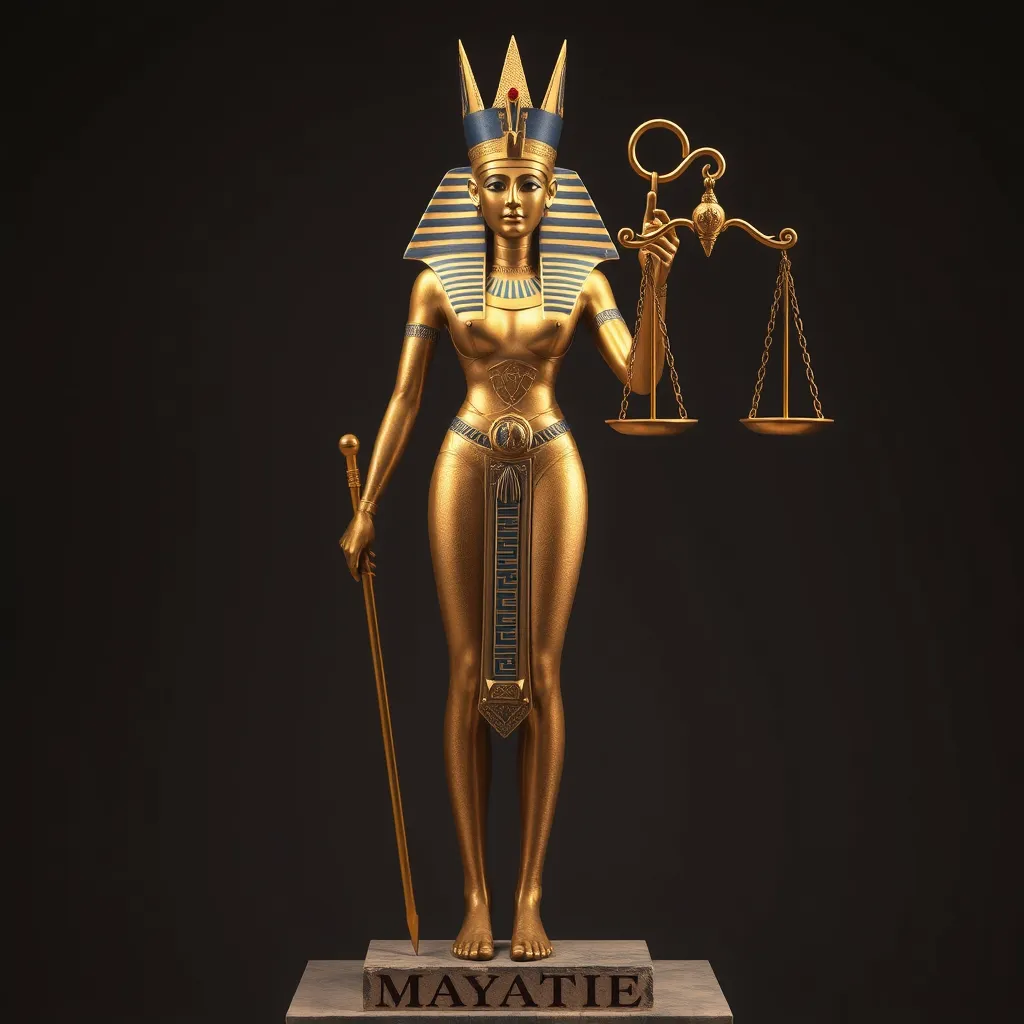The God of Justice: The Myth of Ma’at and Her Role in Ensuring Order
I. Introduction
In ancient Egyptian mythology, Ma’at is revered as the goddess of truth, justice, and cosmic order. Her significance transcends mere mythology, as she embodies the principles that governed Egyptian society. Justice and order were cornerstones of ancient Egyptian civilization, influencing not just legal frameworks but also the moral compass of its people. This article aims to explore Ma’at’s profound significance in maintaining societal order and her lasting legacy throughout history.
II. The Origins of Ma’at: A Historical Context
Ma’at’s origins can be traced back to the ancient Egyptian creation myths, where she emerged at the dawn of time. In these narratives, she is often depicted as a feather, symbolizing truth and balance. Her relationship with other deities is crucial to understanding her role; she is the daughter of Ra, the sun god, and is closely associated with Osiris, the god of the afterlife.
Over time, Ma’at’s symbolism evolved, representing not just moral truth but also the order of the cosmos. Her presence was vital in the daily lives of Egyptians, ensuring that the natural and social worlds remained in harmony.
III. The Concept of Ma’at: Justice, Truth, and Cosmic Order
Ma’at is defined by several core principles that reflect her essence:
- Truth
- Justice
- Balance
- Order
This concept embodies a duality of moral and cosmic order, where Ma’at governs not only human affairs but also the universe itself. Her role in maintaining the balance of the universe is evident in the cycles of nature, the changing seasons, and the celestial movements.
IV. Ma’at in Egyptian Society: Legal and Ethical Implications
Ma’at’s influence permeated every aspect of Egyptian law and governance. The pharaohs, seen as divine rulers, were responsible for upholding Ma’at and ensuring justice within their domains. The legal system was structured around her principles, with judges tasked with interpreting and enforcing these laws.
The role of judges was paramount in upholding Ma’at. They were expected to be fair and impartial, embodying her virtues in their judgments. Case studies from ancient texts illustrate the application of Ma’at in legal decisions, often highlighting her principles in rulings that emphasized fairness and truth.
V. Rituals and Practices to Honor Ma’at
To honor Ma’at, the Egyptians engaged in various religious practices and offerings. Temples dedicated to her were adorned with inscriptions celebrating her virtues and the importance of justice.
Festivals celebrating Ma’at included rituals that emphasized truth and balance, drawing communities together to reaffirm their commitment to her principles. The priests and priestesses played a vital role in these practices, ensuring that Ma’at’s presence was felt in both sacred and secular life.
VI. The Afterlife and Ma’at: Judgment and the Weighing of Souls
The judgment scene in the Hall of Ma’at is one of the most significant aspects of ancient Egyptian belief. Here, the deceased would face judgment, where their heart was weighed against Ma’at’s feather. This ceremony determined whether they led a life in accordance with Ma’at’s principles.
The heart represented the individual’s moral choices, while the feather symbolized truth and justice. If the heart was lighter than the feather, it indicated a life of integrity, granting the individual passage to the afterlife. Conversely, a heavier heart signified wrongdoing, leading to dire consequences.
VII. Modern Interpretations and Legacy of Ma’at
Ma’at’s principles resonate profoundly in contemporary discussions of justice. Her ideals of truth and balance continue to influence modern legal and ethical frameworks across the globe. The very notion of justice as a universal value draws heavily from the principles embodied by Ma’at.
Moreover, Ma’at has emerged as a symbol for justice movements worldwide, inspiring those advocating for equality and fairness. Her legacy serves as a reminder of the enduring quest for justice in human society.
VIII. Conclusion
In summary, Ma’at’s enduring legacy in the context of justice and order is a testament to her significance in ancient Egyptian culture. Her principles of truth and balance continue to hold relevance in today’s society, reminding us of the universal value of justice. As we reflect on Ma’at’s role, it becomes clear that the pursuit of justice remains a fundamental aspect of human existence, guiding us toward a more equitable future.




